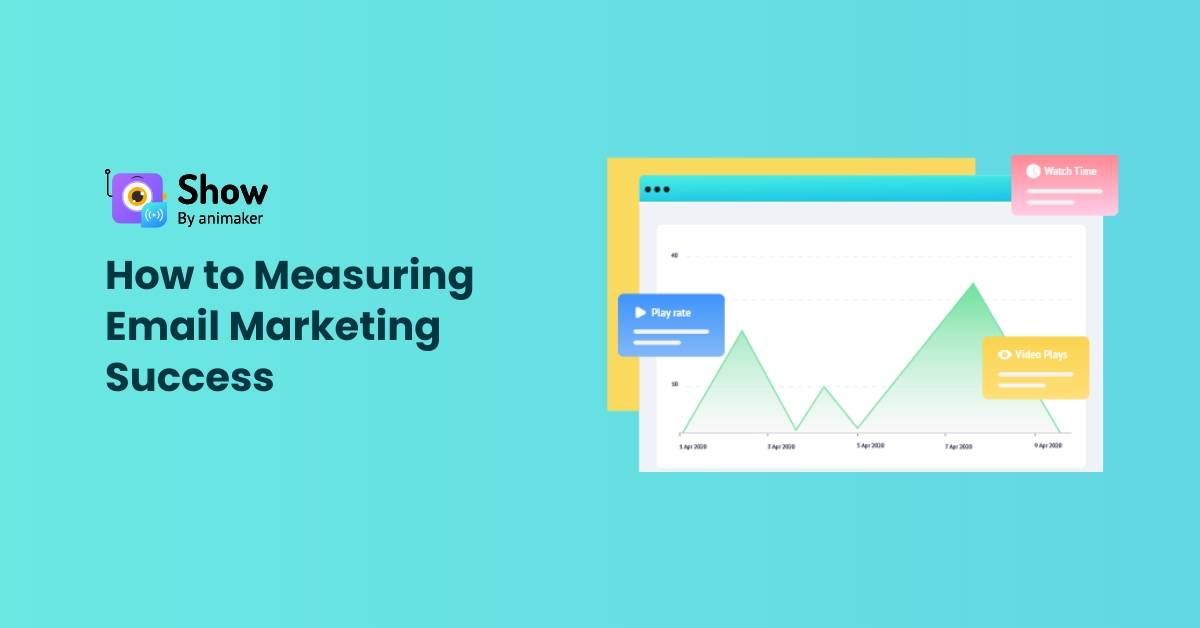Contents
What Are Email Marketing Metrics?
Benefits of Measuring Email Marketing Success
How to Measuring Email Marketing Success
Implementing a foolproof email marketing strategy is one aspect of a successful email marketing strategy. You need to ensure that your email marketing is producing the desired results. A successful email marketing strategy is imperative to business growth and success. In this blog, we will discuss how to measure the success of your email marketing campaigns.
You can tick all the boxes of your email marketing strategy. However, that does not mean that your email marketing strategy will turn out to be a success. You need to measure using your email marketing against your Key Performance Indicators(KPIs) or Objectives and Key Results(OKRs). Let’s look at the importance of email marketing metrics.
What Are Email Marketing Metrics?
Email marketing metrics are quantitative indicators of the performance of your email marketing strategy. These metrics are used to evaluate your emails’ performance. They help you gain insights into your email marketing. You can optimize your email marketing based on the information you garner from email marketing analysis.
Benefits of Measuring Email Marketing Success
Email marketing metrics are essential to gain insights, improve your email marketing strategy, and measure the success of your campaigns. Here are its benefits:
- Provides Insights
Email marketing metrics will help determine whether your email marketing campaigns are working. They enable you to make data-driven decisions. Your business will be able to quantify the success of your email marketing campaigns.
- Increases Engagement
Email marketing metrics help you know your email marketing campaigns' strong and weak points. You can improve your engagement by measuring your campaign against metrics such as open rates and click-through rates. The numbers help you determine the steps you need to take to optimize your email marketing.
- Improves Targeting
You do not have to rely on your primary email marketing metrics such as open rate and bounce rate all the time. You can opt for deeper data email analytics. You can also analyze your data to know subscriber and engagement demographics to gather more information. Based on the data, you can optimize your targeting.
- Helps in Tracking Return on Investment(ROI)
Advanced email analytics helps you track the revenue generated from email campaigns. You can also track the ROI you get from your email marketing campaigns and check whether your investment in an email marketing strategy is actually paying off.
Key Metrics to Measure Email Marketing Success
Now that we know the benefits of measuring email marketing success. We can now explore the key metrics to measure email marketing success.
- Open rate: The rate at which recipients opened your email.
- Click-through rate (CTR): The share of recipients who clicked on a provided link in your email.
- Conversion rate: The rate of recipients who completed a desired action after clicking through your email. It can be filling out a form or making a purchase.
- Bounce rate: The percentage of emails that failed to reach the recipient.
- Unsubscribe rate: The share of recipients who unsubscribed from your email list after receiving your email.
- Revenue generated: The revenue generated by your email campaigns.
- Engagement rate: The engagement with your email content, including the number of likes, shares, and comments.
- List growth rate: The pace at which your email list is growing.
- Forward rate: The rate at which recipients forwarded your emails.
- Spam complaint rate: The percentage of recipients who marked your emails as spam.
Now that we know the benefits of measuring email marketing success and the best metrics to measure them. Let’s look at the best practices for measuring email marketing success.
Best Practices to Measure Email Marketing Success
- Define Clear Goals and Metrics
Just like an email marketing strategy cannot be a shot in the dark. The same can be said about measuring email marketing success. You need to ensure that you have a clear-cut goal in mind. For instance, in some cases, you can prioritize engagement metrics and in other cases, you can keep an eye on revenue-generated metrics.
- Measure Your Email Campaigns Consistently
Keep a constant eye on email marketing analysis to know whether your email marketing is reaping the desired results. You need to track your email campaigns consistently to truly judge whether your email campaigns are successful or not. You can optimize your email campaigns according to email marketing analysis.
- Audience Segmentation
Segmenting your email lists according to their level of engagement and behaviour will help you design better email marketing strategies. The segmentation also allows you to determine the sets of recipients that are more valuable to your email marketing strategy in comparison to others.
- Test and Optimize Campaigns
Your email marketing campaigns need not be unidimensional. You can constantly experiment and optimize your email campaigns accordingly. Keep conducting A/B tests to arrive at the best email marketing content and strategy for your campaigns. The experimentation should not come to a halt after a couple of rounds. As optimizing your email campaigns will remain a perpetual process, so would experimenting, testing, and optimizing campaigns.
- Know the Industry Benchmarks
It can be tricky to determine whether your email marketing campaigns are producing the desired outcome. The one way you can measure the success of your email campaigns is by using the industry benchmarks as your yardstick. Try to go as deeper as you can with your industry benchmarks. Know your numbers about the fundamental data about metrics such as open rate, click-through rates(CTR), and conversion rates.
- Track a Variety of Metrics
The fundamental metrics such as open rate, CTR, and conversion rates should definitely be tracked. However, it can be limiting to track only these metrics. You can up developing a tunnel vision by solely relying on these metrics. The focus should also be on metrics such as engagement rate, revenue generated, and subscriber growth to glean more insights to measure your email marketing success.
Conclusion
Executing an email marketing strategy is just a job half-done. It is critical to know the performance of your email marketing campaigns. Getting hands-on quantitative, behavioural, and demographic data helps you measure your email marketing success. However, it is easier said than done.
You have to ensure that you are tracking the right metrics. Implement the best practices to measure your email marketing success effectively.




